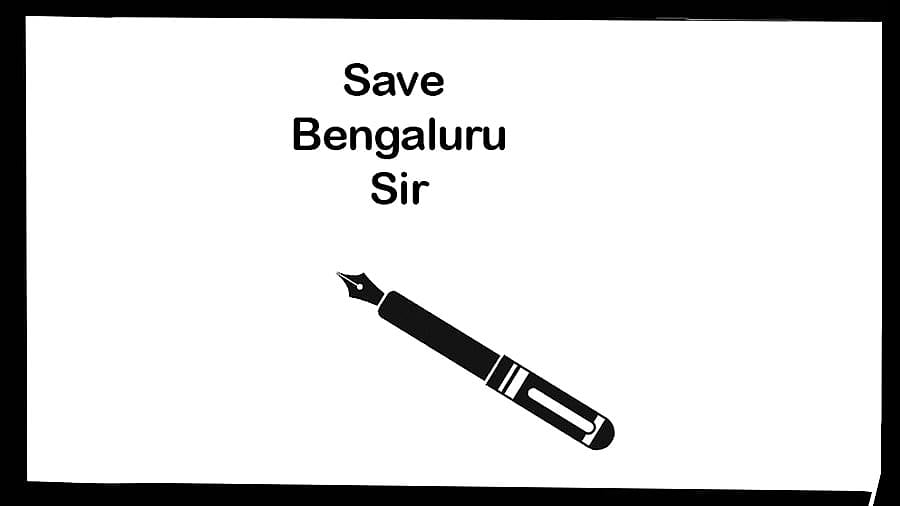
Dear Shivakumar,
I write this letter with a deep sense of both frustration and hope. Frustration, because the state of affairs in Namma Bengaluru is deteriorating, raising serious concerns about the quality of life for its citizens and the future of our great city. Hope, because I believe that with your competence and influence in the current government, you can turn things around and prevent further decline.
I hope you have seen the insightful editorial, ‘Borrowing to Build White Elephants?’ in Deccan Herald (October 1). It draws your attention to the proposed mega infrastructure projects for Bengaluru, particularly their financial implications, environmental impact, and the lack of public consultation. The editorial specifically called attention to projects like tunnel roads, elevated corridors, and a sky-deck—initiatives carrying a hefty price tag of Rs 39,000 crore. Additionally, I understand that Rs 1 lakh crore is planned for infrastructure investments to “sustain the influx of people” over the next decade. Surely, before undertaking projects of such magnitude, we must thoroughly scrutinise them through cost-benefit analysis, considering their spatial, social, economic, and environmental impact.
Bengaluru, with its immense economic potential, excellent human resource, favourable climate, and status as a global technology hub, deserves a comprehensive plan that recognises its strengths and addresses its shortcomings. Forget the Master Plan lost in the maze of government files in the secretariat. What we now need is a Strategic Plan that focuses on the current problems, with a vision for the future.
First things first. Let us have a clear Action Plan to address the current problems
1. Fix potholes: Deadlines have been set repeatedly for the Bruhat Bengaluru Mahanagara Palike (BBMP) to fix potholes, but little has improved. The quick fixes done by the BBMP are unscientific, often resulting in new potholes, benefiting contractors and misleading citizens. A lasting solution must involve scientific methods, which the engineers are aware of, even if it takes more time and incurs higher costs.
2.Keep the city clean: While pourakarmikas sweep the streets every morning, litter and garbage accumulate during the day and are not cleared. Of the 17 mechanical sweepers purchased earlier this year, only seven are operational. Why are machines costing Rs 70 lakh each not being fully used? Continuous cleaning should be introduced to enhance the city’s appearance. Drains must also be cleaned regularly to prevent blockages. Although the BBMP is performing well in solid waste management, it needs to improve wet waste processing and disposal, ensuring all processing centres operate efficiently to prevent dumping and pollution.
3.Ease traffic congestion: While this is not easy given the increasing number of vehicles on the city’s roads, improvements are possible with stronger enforcement of regulations. For instance, violations of lane discipline, particularly by two-wheelers, cause avoidable congestion. Overtaking on the right leads to unnecessary accidents, and poor traffic light timings further exacerbate the problem. The traffic police’s over-reliance on technology is not yielding the desired results; innovative thinking is required.
4.Prioritise public health and environment: The Covid-19 pandemic underscored the importance of public health. By improving sanitation and ensuring safe drinking water, infectious diseases such as diarrhea and gastroenteritis can be controlled. Air pollution can be reduced by better management of polluting motor vehicles and different types of outdoor and indoor waste. Protect open spaces, parks and play grounds and minimize tree cutting.
5.Improve existing road infrastructure: Pay attention to quality of roads and footpaths by setting the right norms and standards in tender documents. Consider tender-sure roads as a model. Plan to upgrade quality of internal roads in residential areas so that they last longer, avoiding annual repairs. Renovate storm water drains preventing flooding in rainy season. Ensure brighter street lights and proper maintenance.
6.Conserve water, prevent wastage, reuse waste water: The water crisis Bengaluru faced during last April and May should serve as a warning to speed up measures for water conservation.Bengaluru cannot rely solely on the Cauvery or other distant sources. Steps must be taken to ensure 100% treatment of wastewater and prevent it from entering lakes and drains. This will also reduce flooding and enable the use of treated water for non-potable purposes.
7.Promote public transport: Increase the number of buses and expand the metro network. Extend metro to the airport on priority, but avoid extension to outlying areas. Rationalise bus routing while taking measures to reduce the number of private vehicles (cars and two-wheelers). This can be achieved through tough decisions such as limiting the number of vehicles on certain highly congested roads by levying congestion and heavy parking charges, failing which traffic problem will only aggravate.
8.Control illegal constructions: Unless this problem is tackled in all seriousness, other issues cannot be solved. Illegal constructions exacerbate issues such as traffic congestion, parking problems, and neighbour disputes, and they also lead to health problems. Failure to address this issue will distort the city’s spatial structure and degrade its beauty.
All these measures will cost you less than the money you have estimated for your pet infrastructure projects.
Long-term vision
Pardon me for saying that your long-term vision for infrastructure, like tunnel roads, is neither understood nor shared by many people.
We need to reimagine the city in a future time-frame of at least 10-20 years hence: What should Bengaluru be like by 2035? Can it become a developed city by 2047 in line with the Vikasit Bharat 2047 vision? I’ll leave it to you to think over, except to say, that, namma Bengaluru should not only have good infrastructure and generate wealth, but should also be socially and culturally vibrant, and environmentally sustainable. Please take citizens into confidence. Bengaluru has many experts and civic associations who can offer constructive suggestions.
All you need is the political will -- to decide and to execute.
A concerned citizen
(The writer is a former chief secretary, Government of Karnataka)